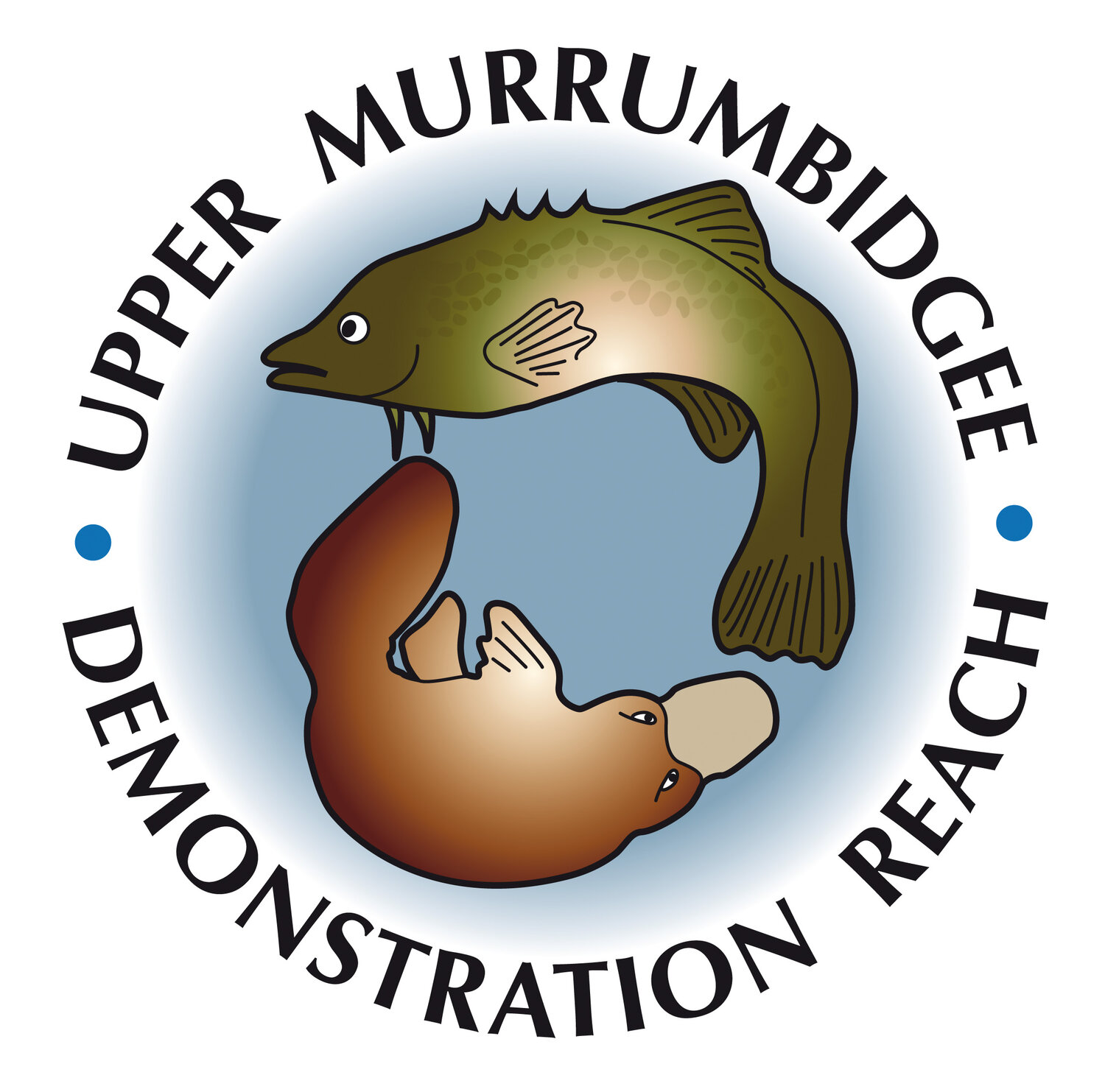HAG 2020- Homes for Maccas
What did this project do?
This project has improved instream habitat and riparian connectivity along the upper Murrumbidgee River downstream of the Cooma Gorge by controlling woody weeds (willows) and installing instream habitats (fish hotels and snags) built from native timber hardwood. This project complements other projects in the reach including riparian revegetation and additional habitat works.
The photos above show upper Murrumbidgee River in the Cooma Gorge where good quality habitat remains (LHS) and downstream (RHS) where native vegetation loss, reduced in stream habitat and increased woody weeds such as willows are degrading fish habitat.
What is the problem?
The upper Murrumbidgee River is the known habitat for the endangered Macquarie perch- where one of the last remaining natural riverine populations are found. The fact that the upper Murrumbidgee River retains areas of significant high quality habitat instream and along its banks- especially in the steep and remote gorge areas- means that native fish have been able to survive.
Once the river flows out of the gorge country and through the flatter alluvial floodplains, the river corridor has been historically modified with native vegetation and instream habitat now lacking and increased woody weeds along its banks. Native fish however are not just confined to the gorge areas they need both the faster flowing gorge areas and the deep slow flowing pools of the floodplains to support their lifecycle.
Building connectivity for native fish as they move throughout their home range by restoring both riparian (along the banks) and instream habitat is vital to support our native fish populations. Fish such as trout also require good water quality and habitat to thrive.
The photos above show native hardwood logs being used to build ‘fish hotels’ which will improve habitat complexity in slow moving pools. The hotels were constructed (LHS) and then transported to site for installation (RHS).
What is the solution?
Improving habitat both on the edge of the river (with native plantings and by removing exotic plant such as willows) as well as in the water (with hardwood timber structures) will help to provide better conditions for native fish as well as recreational fishing species such as trout. Both of these fish require cool water shaded with overhanging native vegetation, areas where they can take cover and adequate food supplies. Working across a number of sites to build connectivity along a reach is very important to maximise the impact of projects for fish.
This project has controlled willows and installed six habitats at various sites in a 4km long reach downstream of the Cooma Gorge. Instream habitats included ‘fish hotels’ as well as native hardwood timber snags (logs with rootballs attached). These were installed in the slower moving pool areas to provide resting habitat as well as a native timber substrate which can be colonised by waterbugs (and hence improve available food sources for fish). The river has also benefitted from the control and removal of willows from along its banks. Willows will outcompete native vegetation and prevent native shrubs, reeds and sedges from growing on the river bank.
This work has been made possible thanks to funding from the NSW Recreational Fishing Trust via NSW DPI Fisheries’ Habitat Action Grant as well as complementary works being carried out by Greening Australia and Rivers of Carbon funded by the Caterpillar Foundation.
With willows controlled, native vegetation can now occur along the banks in the reach. This has commenced via subsequent projects and further plantings are planned in the future. Further fish habitats are also planned to keep improving the instream habitat of the reach.
Once built the fish hotels were lifted into the water (LHS) and pinned in place using sharpened hardwood piles (RHS).
Project Partners
This project has been made possible thanks to the support and funding of:



















